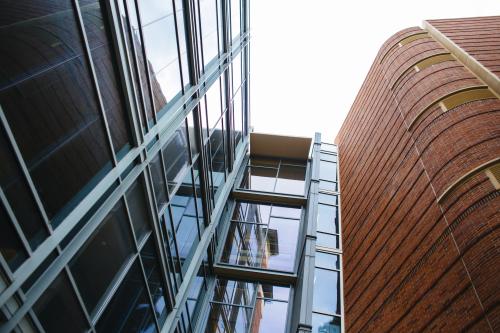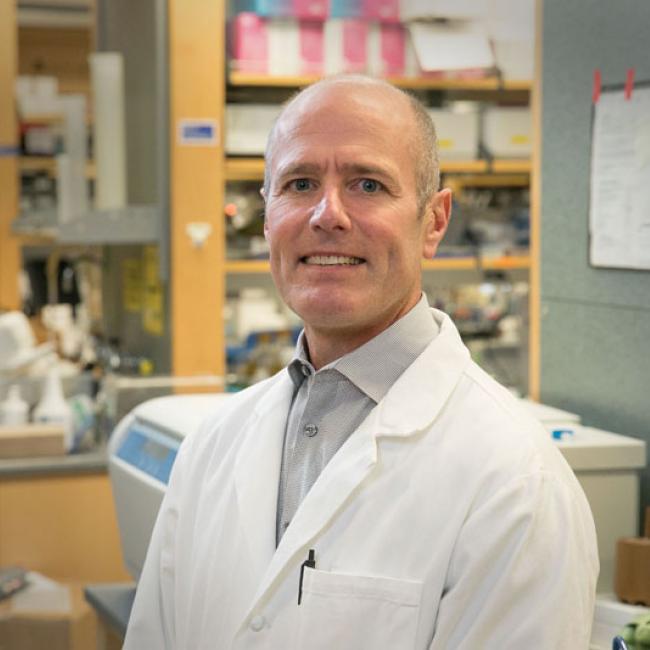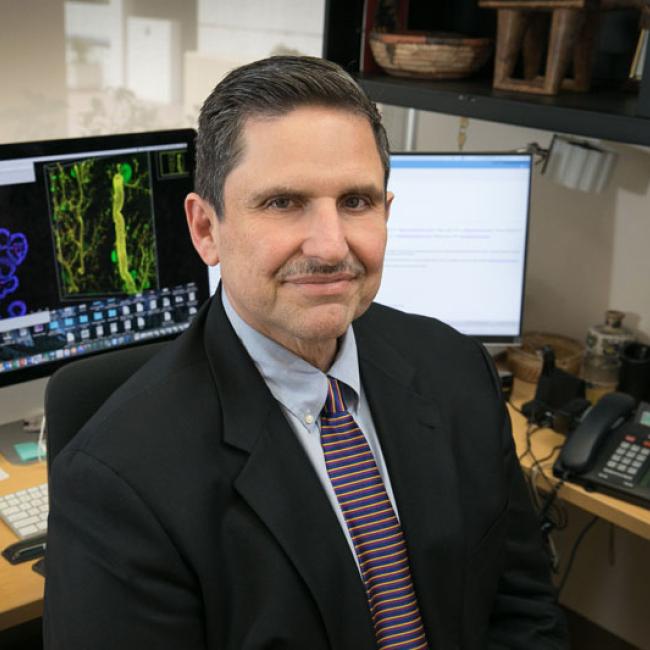
Three UCLA scientists receive $5.3 million in state grants to develop innovative tools to aid in stem cell research
Three scientists with the Eli and Edythe Broad Center of Regenerative Medicine and Stem Cell Research at UCLA were awarded more than $5.3 million in state grants today to develop innovative tools and technologies that will help overcome the technical hurdles in advancing basic, translational and clinical stem cell research.
Dr. Richard Gatti, a professor of pathology and laboratory medicine, will receive a two-year, $1,833,054 grant to use Ataxia-Telangiectasia (A-T), an inherited neurodegenerative disease found in children, as a model to study the mechanisms that lead to neurodegeneration and to develop a drug that can slow or halt the damage.
Dr. Thomas Carmichael, an associate professor of neurology, will receive a two-year, $1,825,613 grant to develop tissue bioengineering systems for a stem cell therapy to treat stroke that seeks to circumvent one major treatment bottleneck: the inability of most stem cell therapies to survive and repair the injured brain.
Dr. Martín Martín, a professor of pediatrics and gastroenterology, will receive a two-year, $1,783,250 grant to study the causes of several disorders that result in severe, and often times fatal forms of diarrhea in children.
The grants were among 20 awarded Thursday to researchers at 10 institutions by the California Institute for Regenerative Medicine (CIRM), the state agency that administers Proposition 71 funding for stem cell research. Part of the Tools and Technologies II Awards, the grants support the development and evaluation of innovative tools and technologies that will help researchers overcome road blocks in stem cell research. The awards were given to scientists to either create new tools and technologies or expand on existing tools or technologies that have shown promise.
To date, scientists at the Broad Stem Cell Research Center have received 43 grants from CIRM totaling more than $140.5 million.
Gatti’s project merges the expertise of two major research cultures - he has long-standing experience in developing a treatment for the progressive childhood disease A-T and William Lowry, an assistant professor of molecular, cellular and development biology in the Life Sciences, who has had success in converting skin cells into pluripotent stem cells that were then differentiated into cells of the nervous system. Together they hope to develop a disease model system for A-T.
Gatti proposes to start with skin cells grown from biopsies of patients with A-T who carry mutations in the ATM gene. He hopes to convert the skin cells into pluripotent stem cells capable of forming the neural cells lacking in A-T patients’ brains. It’s presumed these neural cells need ATM protein to develop normally. He will then test the efficacy of the most promising new compounds being developed over the last six years in his lab on those neural cells.
Currently, there is no other A-T disease model, either in animals or a Petri dish, evaluating the effects of potentially curative compounds on the nervous system and its development. There is no effective treatment for the children with A-T or other progressively-deteriorating neural disorders. If successful, Gatti’s project would open up at least three new areas for understanding and treating neurodegenerative diseases – providing human neural cells with specific disease-causing mutations, offering a new approach to learning how the human brain develops, and a new class of drugs that may correct the disease-causing mutations and possibly reverse neurodegeneration.
Stroke currently is the leading cause of adult disability. While most patients survive the initial stroke, they don’t fully recover. Up to one-third of stroke patients end up in nursing homes or assisted living centers and experience decreased strength or lack of control of the arms or legs. There is no treatment that promotes brain repair and recovery from stroke. While recent studies in animal models show that stem cell transplantation into the brain promotes repair and recovery, no such treatment is available for humans. Three challenges must first be overcome - most of the transplanted cells die, most of the surviving cells don’t interact with the surrounding brain, and the process of injecting stem cells into the brain may damage the normal brain tissue near the stroke site.
Carmichael will assemble a novel investigative team and research approach to overcome these challenges. Combining the expertise of engineering, stem cell biology and stroke scientists, Carmichael hopes to develop systems to support stem cell therapy in stroke by creating a biopolymer hydrogel to provide a pro-growth and pro-survival environment for stem cells when injected with them into the brain.
The hydrogel system uses biological components that mimic the normal brain environment and releases growth factors that enhance survival of the transplanted stem cells. The growth factors hopefully will stimulate the normal brain to undergo repair and recovery, providing a dual mechanism for repair. This approach allows targeting of the stroke cavity for a stem cell transplant. The cavity is an ideal target for a stroke stem cell therapy, as it can receive a stem cell transplant without displacing normal brain.
Diarrheal disorders are inherited, and lead to poor absorption of nearly all nutrients, including protein, sugars and fats. Why children with these disorders have impaired absorption of nutrients is an unsolved mystery, but Martín said they generally require life-long daily infusions of intravenous nutrients or an intestinal transplant to sustain proper growth and nutrition.
Martín’s goal is to develop personalized disease-in-a-dish models that can be used to shed light on these and other poorly understood gastrointestinal disorders. He hopes to develop custom-made “diarrhea-in-a-dish” models using induced pluripotent stem cells derived from the skin biopsies of individuals with various forms of diarrheal disease. These skin cells will be induced to form gut epithelium that Martín believes will replicate various characteristics of the individual’s own intestine. He also hopes to develop methods that are already established in mice to isolate and expand human intestinal stem cells in incubators and in fat compartments of immunodeficient mice. His goal is to manipulate the intestinal units using common tools to introduce and/or suppress genes that might control the histology and function of the gut.
Martín also plans to employ new genetic tools in which the important coding region of the human genome is sequenced to identify genes that are defective, and thereby may account for the diarrheal disorders under investigation. This new approach identifies several genes that are defective, and Martin proposes to introduce the normal forms of these genes into the stem cell-derived gut tissue to see which gene might reverse the abnormality.

